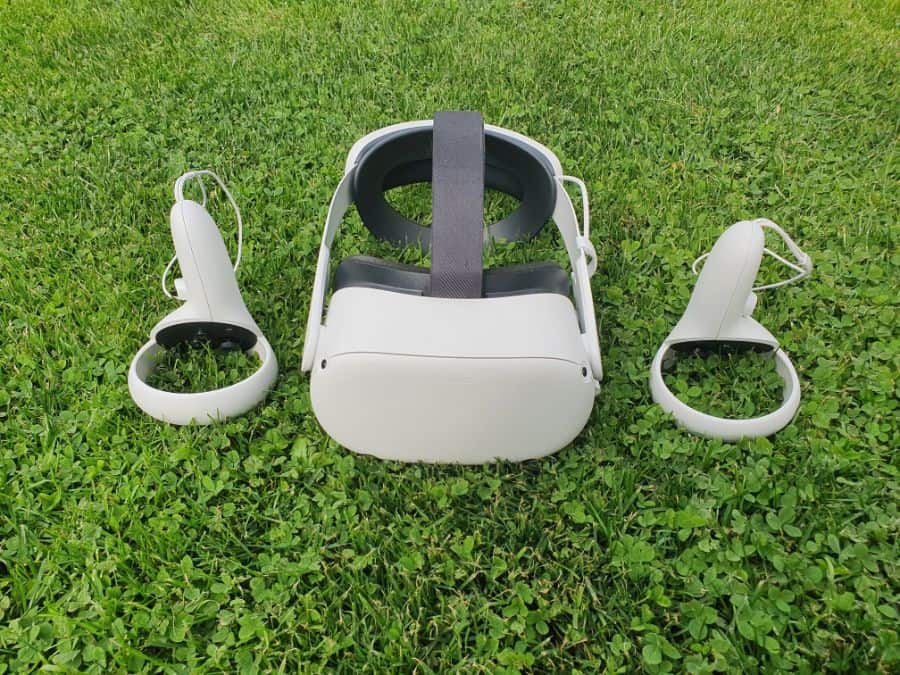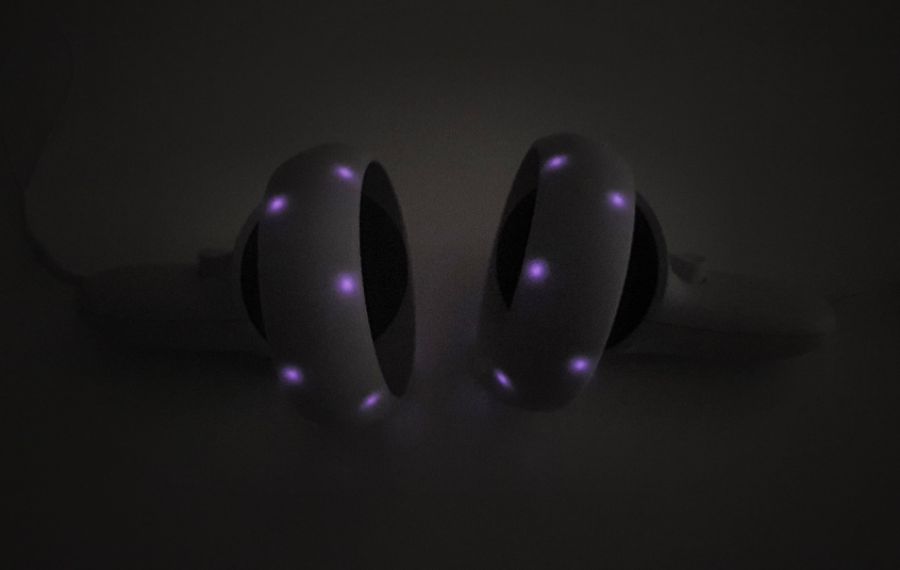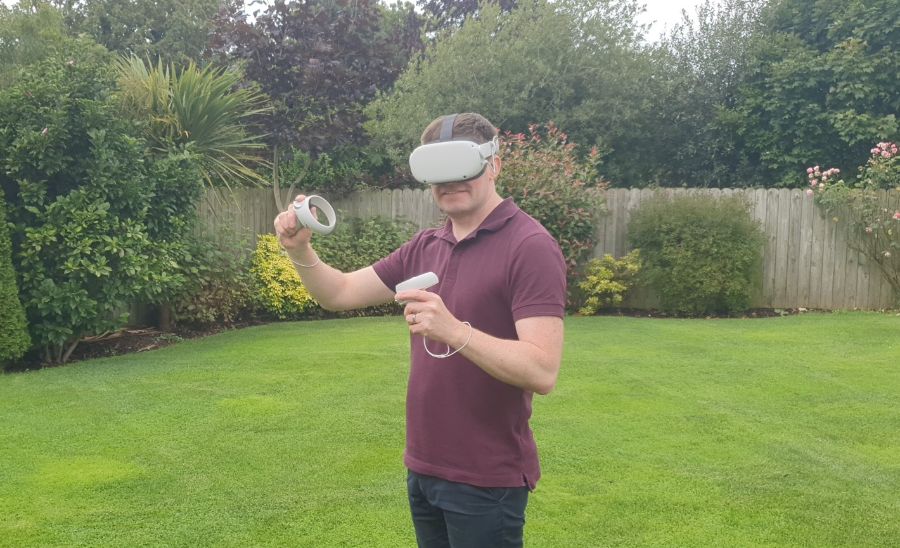Many people wonder whether the Meta/Oculus Quest 2 can work outside, and often this question is a cause of confusion. There are a number of factors to consider, including Meta’s usage advice, safety considerations, and potential damage to the headset itself. In this article, I will discuss each of these issues, the potential risks, and how these can be resolved to let you use your Quest 2 outdoors.
Meta does not recommend using the Quest 2 outside, but it can function outside in limited circumstances. The headset will usually work, but the controllers function very poorly outside, and there are also safety issues related to outside use and a risk of permanent damage to your headset.
However, if certain conditions are carefully met, it is feasible to enjoy an immersive outdoor VR play space if you are aware of potential safety and technological problems. In this article, I will give you all the information you need to decide whether taking your Quest 2 outdoors is right for you.

Why Does Oculus Quest 2 Not Work Outside?
The main issue that impacts the functionality of the Meta/Oculus Quest 2 outside is the limited ability of the cameras on the headset to accurately track the position of the controllers in bright outdoor light. Even on a dull, cloudy day, light levels outside are normally much higher than in a brightly lit indoor space, severely limiting your ability to use the controllers outside.
There are also problems with the function of the actual headset, as well as a risk of damage caused by direct sunlight on the lenses, risk of personal injury, and difficulties connecting to Wi-Fi in some outdoor spaces that will restrict your play options.
This next section is going to cover each of the main issues, as well as discuss how to reduce their impact, so you can play outside if you really need or want to.
Direct Sunlight Can Damage Your Oculus Quest 2
When you break it down, technically the Oculus Quest 2 headset itself can function outside, but there are a few big drawbacks. The first one to mention is the potential damage that direct sunlight can cause to your headset. This has the potential to damage the screen of the Oculus Quest 2, as the lenses can magnify the sun’s rays and permanently damage the screen inside the device.
It is vital to note that damage by the sun is not covered under warranty and is one of the main reasons that Meta recommends that you do not use Quest 2 outdoors.
Guardian Boundary Problems When Using Quest 2 Outside
If you avoid direct sunlight, it is possible to use your Quest 2 headset outside without causing damage to it. However, the next big problem will come when you try to set up the Guardian boundary for your device, which is an important part of the setup process.
This relies on accurate controller tracking to allow you to define the boundary of your play area, and you are likely to have great difficulty with this unless the lighting conditions are perfect and you are playing in a relatively small outdoor space with lots of surrounding features to help with the controller tracking.
There is the option to turn off the Guardian system on Quest 2, and whilst this isn’t recommended, it will at least allow you to use the headset outside without having to do the Guardian setup at all. Although disabling the Guardian on your Quest 2 will allow you to enter your Oculus home environment, you are very unlikely to be able to use the controllers, as we’ll discuss in the next section.
Despite these potential problems with the headset, they are far from the main issues with using the Meta Quest 2 outside.
Problems Using The Quest 2 Touch Controllers Outside
The relative functionality of the Quest 2 headset outdoors is sadly not shared by the Touch controllers. The problem is that the position of the controllers is tracked by the cameras on the headset, and the Quest 2 cameras have immense difficulty tracking the controllers in outdoor lighting conditions.
The Quest 2 Touch controllers have a number of infrared LED lights spaced along the ring of each controller that the cameras on the headset use to track the movement of the controllers. The cameras cannot accurately detect these IR LED lights outside due to the large amounts of natural light outside that drowns out the light coming from the controllers.

You can still rotate and change the orientation of the controllers due to the combination of accelerometers, gyroscopes, and magnetometers inside the controllers that help to fine-tune the tracking, but moving your controllers and getting them to track your movements is almost impossible. You will see exactly the same controller behavior indoors if you hide your controller behind an obstacle and try to move it – The headset simply cannot see the controllers outside most of the time.
Therefore, you can ‘use’ your headset and move throughout your virtual environments but your controllers will be unlikely to join you for the ride. This will make it virtually impossible to interact with games and apps as your touch controllers will be rendered totally ineffective.
Risk Of Personal Injury
Outdoor areas can pose a greater risk of injury, even in a seemingly flat back garden. Falling can easily be caused by small changes in elevation or stumbling upon a small hole or tree root. Remember that you are essentially blindfolded in VR and you will not be able to see elevation changes and obstacles while wearing your headset. This can further increase the risk of falling, not to mention that you are blindfolded as you fall, which can worsen the injury.
Even worse, the fact that you are highly unlikely to be able to make the Guardian boundary work increases the risk that you will wander outside of your safe play area and bump into obstacles that might cause injury.
With the risk of injury, it is extremely important that you carefully evaluate the risks associated with taking your headset outside. If you do choose to go outside, examine the play space for obstacles, and uneven ground and I would strongly recommend that you have someone nearby to keep an eye on you.
You should also avoid public spaces such as parks or playing grounds where possible, as you will be less familiar with the terrain, and it is hard to account for the actions of other people who may be using the space.
Wi-Fi Access
Whilst it is possible to play some games on your Meta Quest 2 without an internet connection, some do require you to be online, and obviously, any multiplayer games require you to have a reliable connection. It is usually much more difficult to connect to a reliable Wi-Fi connection outdoors, which may significantly restrict your options for playing outdoors.
You should try to be within range of a Wi-Fi router or be able to use your phone as a Wi-Fi hotspot, although using your phone may not provide a fast enough internet connection depending on where you are.
If your outdoor area does not have good Wi-Fi access, you can play Oculus Quest 2 games offline without Wi-Fi. This just requires slightly more planning as you will need to download what you want to play before you go offline.
How Can I Use My Quest 2 Headset Outdoors?

Despite all the drawbacks of using a Meta Quest 2 headset outside, it is technically possible to make it work outside, but you will need to experiment to find the perfect conditions to get everything working. You will also need to take steps to ensure both you and your headset are safe.
Having spent lots of time experimenting with outdoor usage, I was not even able to get the controllers to track accurately on a dull, cloudy day. I had some success when playing in an outside space when I optimized the conditions perfectly by having lots of features such as walls, plants, and a fence close to me, and playing in the early evening when lighting conditions were very dull.
I did also have some success using my Quest 2 outside after dark, as I was able to use a number of outside lights to illuminate the area sufficiently and achieve fairly good controller tracking performance.
Personal Safety
If you choose to use an Oculus Quest 2 headset outside, you need to ensure you are doing it somewhere that you are confident is safe, free of obstacles, and ideally flat. This can start to limit your options because you will also need very dull conditions at the start or end of the day, not to mention a playspace of at least 2m by 2m (6.5ft by 6.5ft) and a suitable position to allow Wi-Fi access.
You should try your best to make sure the touch controllers are working so that you can set up your Guardian boundary system to prevent collisions with unsuspecting walls or garden ornaments. If you are confident that you have a large enough space or have someone nearby to keep an eye on you, exploring or taking a stroll throughout your favorite virtual worlds can be a reality.
